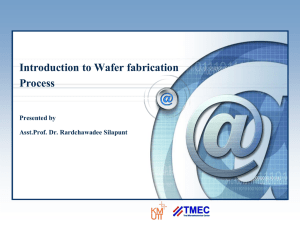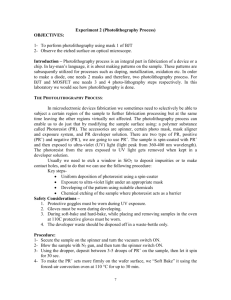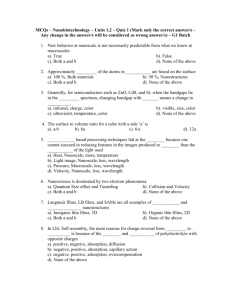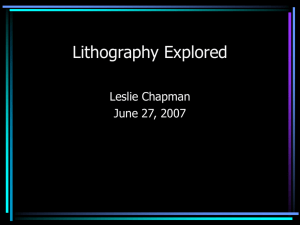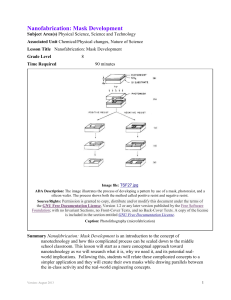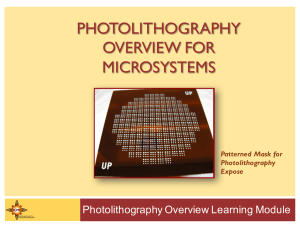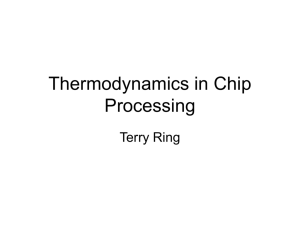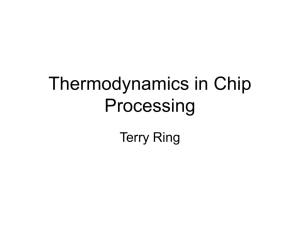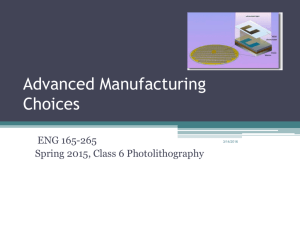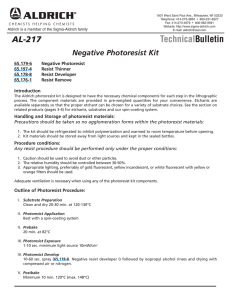Post-Introduction Quiz Answer Key
advertisement
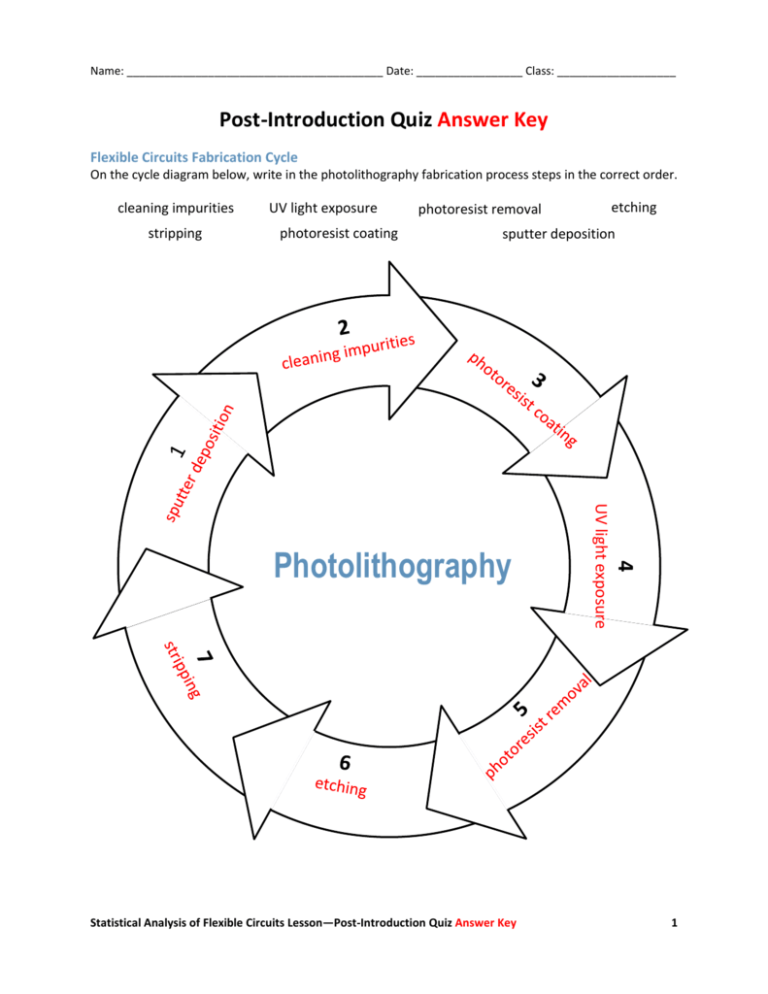
Name: _________________________________________ Date: _________________ Class: ___________________ Post-Introduction Quiz Answer Key Flexible Circuits Fabrication Cycle On the cycle diagram below, write in the photolithography fabrication process steps in the correct order. cleaning impurities stripping UV light exposure photoresist coating etching photoresist removal sputter deposition 4 Statistical Analysis of Flexible Circuits Lesson—Post-Introduction Quiz Answer Key UV light exposure Photolithography 1 Name: _________________________________________ Date: _________________ Class: ___________________ Terminology Instructions: Draw lines to match each photolithography step with its corresponding description. Photolithography Step Description cleaning impurities A method of depositing thin films of a conductor material by way of eroding a “target” source onto a non-conductor “substrate.” This is typically accomplished by bombarding the “target” (source of deposition material) with inert gas atoms. Atoms on the “target” flies to the “substrate.” UV light exposure A wafer coated with a thin conductor is covered with UV light-sensitive liquid by spin coating; this viscous liquid solution is dispensed onto a rapidly spun wafer to produce a uniformly thick layer. stripping Organic / inorganic contaminations are usually removed by wet chemical treatment, based on solutions containing hydrogen peroxide. Other solutions made with trichloro-ethylene, acetone or methanol can also be used. photoresist coating etching The photoresist that chemically reacted is removed from the substrate. This usually requires a liquid resist stripper or developer, which chemically alters the photoresist so that it no longer adheres to the substrate. The use of a solvent called a stripper to remove the photoresist and any of its residues. sputter deposition UV light passes through a mask (a print of the circuit to be transferred to the wafer) placed on the conductor coated wafer. Light causes a chemical change on the photoresist over portions not covered by the mask. photoresist removal Using a liquid ("wet") or plasma ("dry") chemical agent, the uppermost layer of the conductor substrate is removed in the areas that are not protected by the photoresist Statistical Analysis of Flexible Circuits Lesson—Post-Introduction Quiz Answer Key 2
